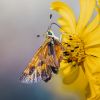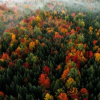Biodiversity in Focus: United States Edition
Scope of NatureServe Data
NatureServe provides authoritative, decision-quality information on the locations of at-risk species across the U.S. and Canada. You can use NatureServe Explorer Pro to view public, generalized data (generalization or “fuzzing” levels are set by our state and provincial partners), or, when authorized, to access more precise location data under license. Licensed data can also be delivered directly to you in a variety of spatial formats for use in your GIS and workflows.
NatureServe Policy for Network Data
NatureServe Policy for Acceptable Uses of Network Data
The following section defines the ways NatureServe staff can use Network Program data (including, but not limited to, use of Element Occurrences (EOs), Source Features, and Observations) shared with NatureServe, as well as products derived from Network Program data (including, but
Data Use Terms and Citations
NatureServe develops, maintains, and shares a wide range of information on imperiled species and ecosystems, often in collaboration with members of the NatureServe Network. Please visit our Access Data on Species & Ecosystems page for the latest list of information products that we have available.
Biodiversity for Beginners eBook Download Confirmation
What is biodiversity, and why does it matter? Our free e-booklet, Biodiversity for Beginners, is an easy-to-read introduction designed for parents, teachers, and anyone curious about nature.




